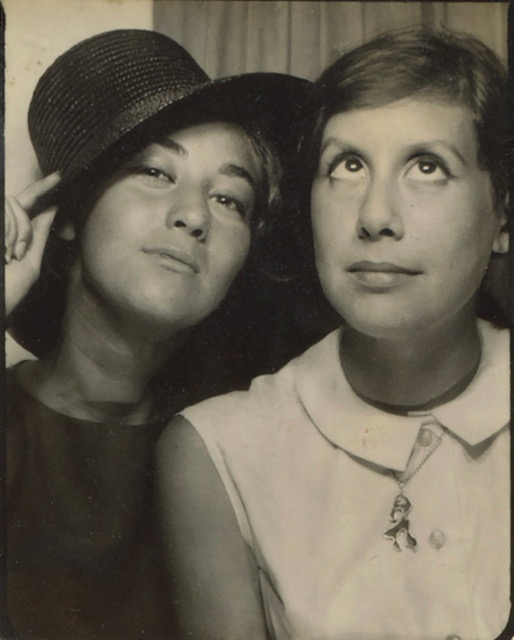An empty shell. Doesn’t know who he is. Violent. Doesn’t recognize family members. Unable to communicate. The negative stereotypes and exaggerations of Alzheimer’s disease abound.
Even the harrowing descriptions of Alzheimer’s meant to increase our sympathy—robs its victims of dignity, destroys their brains and identities—have the unintended effect of distancing “them” from “us.” Distance and negative stereotypes lead to stigma.
The stigma and fear of Alzheimer’s are one reason some doctors avoid the term and tell their patients and families, “It’s dementia.” But dementia is not a disease. It’s a group of symptoms of progressive cognitive decline caused by specific diseases. Alzheimer’s disease is the most common cause of dementia.
In my blog for the Silver Century Foundation, I will challenge stereotypes and misconceptions about Alzheimer’s. I will take readers inside the world of the person living with Alzheimer’s and into the world of the caregiver. I hope that greater understanding will lessen the fear surrounding Alzheimer’s and diminish the stigma that isolates the people living with it—and, as a consequence, their caregivers as well.
The stigma seemed less in the 1980s when my mother was diagnosed at a large research hospital. But at that time, so little was known about the experience of people with Alzheimer’s, the scant advice I was given did not hold up in practice. I had asked if I should reorient my mother when she was confused and was told that I should. It took my 24-year-old son to make me see the effect of that. After sitting through dinner with my mother and me, he told me, “Mom, I’m so exhausted from listening to you trying to unconfuse Gran, I can’t imagine what it’s doing to you.”
Or, I thought, to her! Because, in truth, it made her much more anxious, and not a bit less confused. It undermined her self-confidence by highlighting where she was failing.
I wish I could say that was all I needed to learn to help my mother live well with Alzheimer’s. But it was an important start because it led me to turn away from the medical model of focusing on what was wrong with her, and trying to fix it, and to concentrate instead on recognizing how the way we interacted with her affected her.
The problems that arise when caring for someone living with Alzheimer’s are unfamiliar and easy to misinterpret. It made sense to me that, because of her loss of short-term memory, my mother was unable to keep a phone number in mind long enough to dial it. To solve that problem and to allow her to make calls independently, I bought her an automatic dialer. You pick up the receiver and push the button next to the name of the person you want to call. But it was more than she could handle. How many times did I go over it with her? How exasperated did I sound? It pains me to recall.
The early years of caring for someone living with Alzheimer’s are a minefield of such unexpected problems, because most of the time the person looks and acts like he always has. Until caregivers understand the brain damage that the disease is causing, they are likely to expect too much. They need to know that the losses in ability are real, so they don’t attribute inaction to stubbornness. And they need to know the challenges the person faces so they can compensate appropriately. (Later, when the disease is more advanced, caregivers are likely to expect too little and will need help, instead, to see that the person is still much more than he seems.)
The automatic phone dialer stymied my mother because it had two steps in sequence: pick up receiver, push button. Sequencing is impaired in Alzheimer’s. Setting a table, getting dressed, following a recipe: all of these activities, and many others, consist of simple steps that you do in sequence. And all of them become difficult for people living with Alzheimer’s unless someone breaks the task down to one step at a time. “Would you put these place mats on the table? Great! Now, here are the forks….”
That’s an appropriate way to compensate, especially if it’s done in a tone that doesn’t demean the person. But doing that all day is a tall order for a lone family caregiver. As is infinite patience. The caregiver needs time off; support; help understanding the behavior of the person with Alzheimer’s; and encouragement and guidance to help the person remain himself.
In future blogs I’ll write about what the person living with Alzheimer’s needs, and how leaving those needs unmet results in the very behaviors that form the basis of the Alzheimer’s stereotypes. I’ll tell of people living with Alzheimer’s who forcefully expressed their needs—but no one understood.
Based on my 23 years of experience of leading support groups, I’ll give readers a sense of the problems we solve together and the wisdom we’ve gained, such as that the way we regard Alzheimer’s disease, and the person living with it, matters crucially to the person’s sense of self.
I’ll point out the strengths that remain in someone with Alzheimer’s, and the many ways in which he is still the same person. I hope readers will see the common ground we share with him. When we recognize that common ground, when we feel it, our humanity expands and stereotypes crumble.
Maggie Sullivan has come to know Alzheimer’s intimately. She was caregiver and advocate during the eight years her mother lived with the disease. For the past 30 years, she has facilitated caregiver support groups for the Alzheimer’s Association, learning from the experience of more than 300 members of those groups. The opinions she expresses here are her own. Maggie is also a writer whose essays and articles have appeared in the New York Times and elsewhere.



